Good practice and respect for the age-old tradition of preserves combined with the use of state-of-the-art technology has placed Spain among the top countries in the world ranking of the preserves industry.
But preserving did not replace salting the fish until the end of the 19th century, although the seed was planted back at the beginning of this century. In 1810, Frenchman Nicolás Appert revealed his method for preserving food using thermal sterilisation. Shortly thereafter, Peter Durand patented the tinning container.
But it was English engineers Bryan Donkin and John Hall who purchased the patent and opened a preserves factory where they packaged mainly meats and vegetables. France was where the practice of preserving fish and shellfish began.
In Spain, the origins of this industry go back over two centuries. The Galician Sea inlets were one of the main areas for salting fish, while the Catalan migrants arriving in the 18th century to commercialise sardines brought new technology with them.
The turn of the 19th century was a glorious time for the preserves industry in the Galician ports due in part to Spanish neutrality during World War I.
Up until 1936 the preserves industry had experienced a period of growth but the self-sufficiency policies at the hand of Franco resulted in Spain closing itself off to the rest of the world and shortages of raw materials forced preserves companies to fold. With this in mind, the growth of the transformational preserves industry of the Galician Sea inlets at the beginning of the 20th century was far superior to other relevant areas such as Asturias or Cantabria, with the latter specialising in marinades.
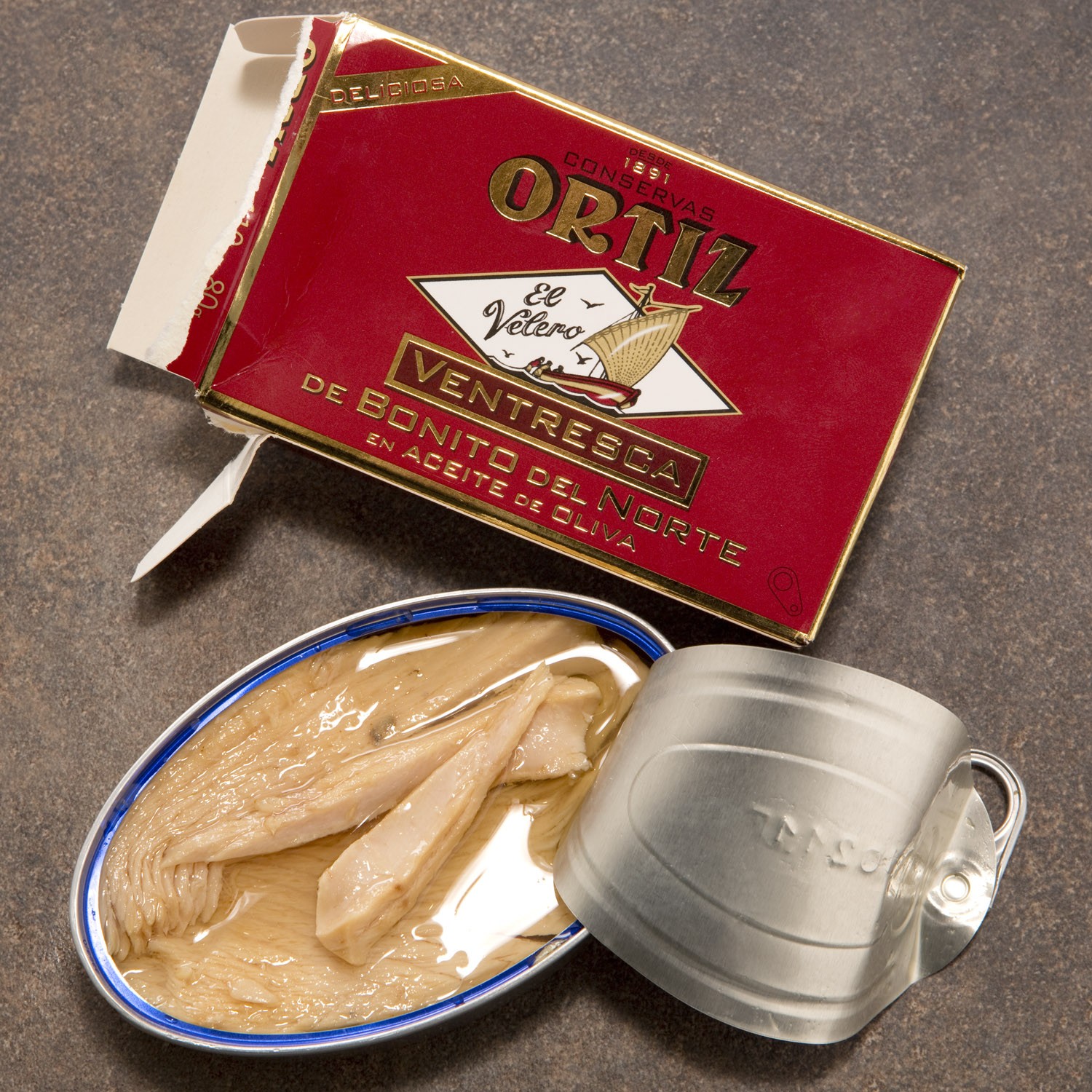
Albacore tuna belly in olive oil
Tuna belly in olive oil is one of the many delicacies obtained from the reputed Albacore tuna due to its supple texture and its tremendous flavour. Its smooth and delicate texture makes it very pleasing to the palate. It is a very nutritious fish, rich in protein, polyunsaturated fats, omega 3, vitamins and minerals. The best Albacore tuna are caught along the Cantabria Coast and the flavoursome bellies are removed and preserved in olive oil, making a delicious treat.
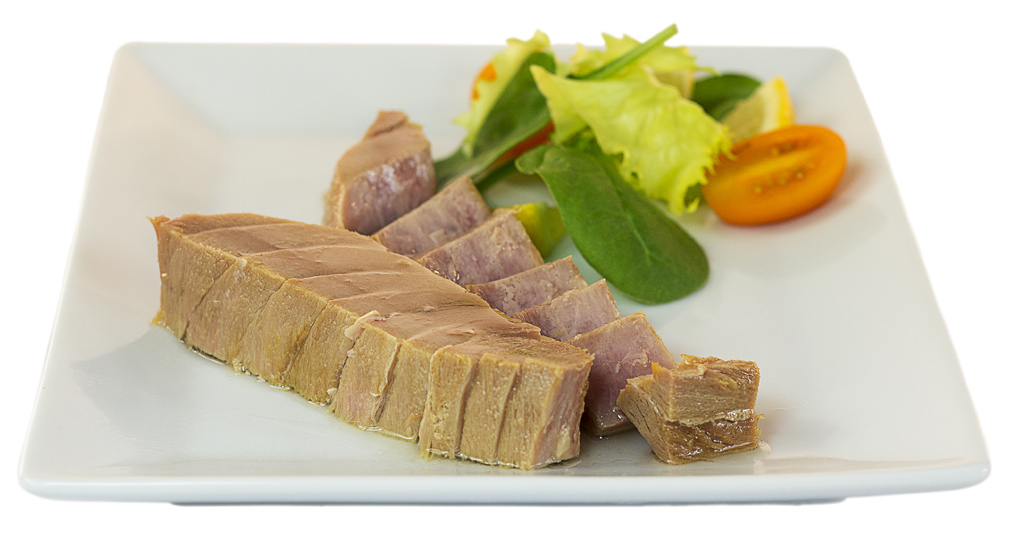 Albacore tuna in olive oil
Albacore tuna in olive oil
The albacore tuna in olive oil preserve is considered the best of the tuna family in Spain and in other international markets such as the US and France. Towards the end of June, fishermen catch the best specimens of albacore tuna in the Cantabrian Sea, although the season lasts until the beginning of autumn. Since the mid 20th century, this white-flesh fish with mild flavours and textures has taken on greater significance in the fishing industry.
Atlantic Chub Mackerel in olive oil
The Atlantic chub mackerel (caballa del sur) and its quality are guaranteed by the Protected Designation of Origin of Caballa and Melva in Andalusia and its traditional flavour takes us to the southernmost part of Spain. The catching region is between the months of April and September. This fish preserve began to be refined when the preserves industry was flourishing in the region, at the end of the 19th century. The traditional flavour of the Atlantic chub mackerel is unique to the south of Spain. It is advisable to buy it preserved in olive oil, presented as perfectly firm fillets. As to the nutritional characteristics, it has a high protein, omega 3, and vitamin and mineral content.
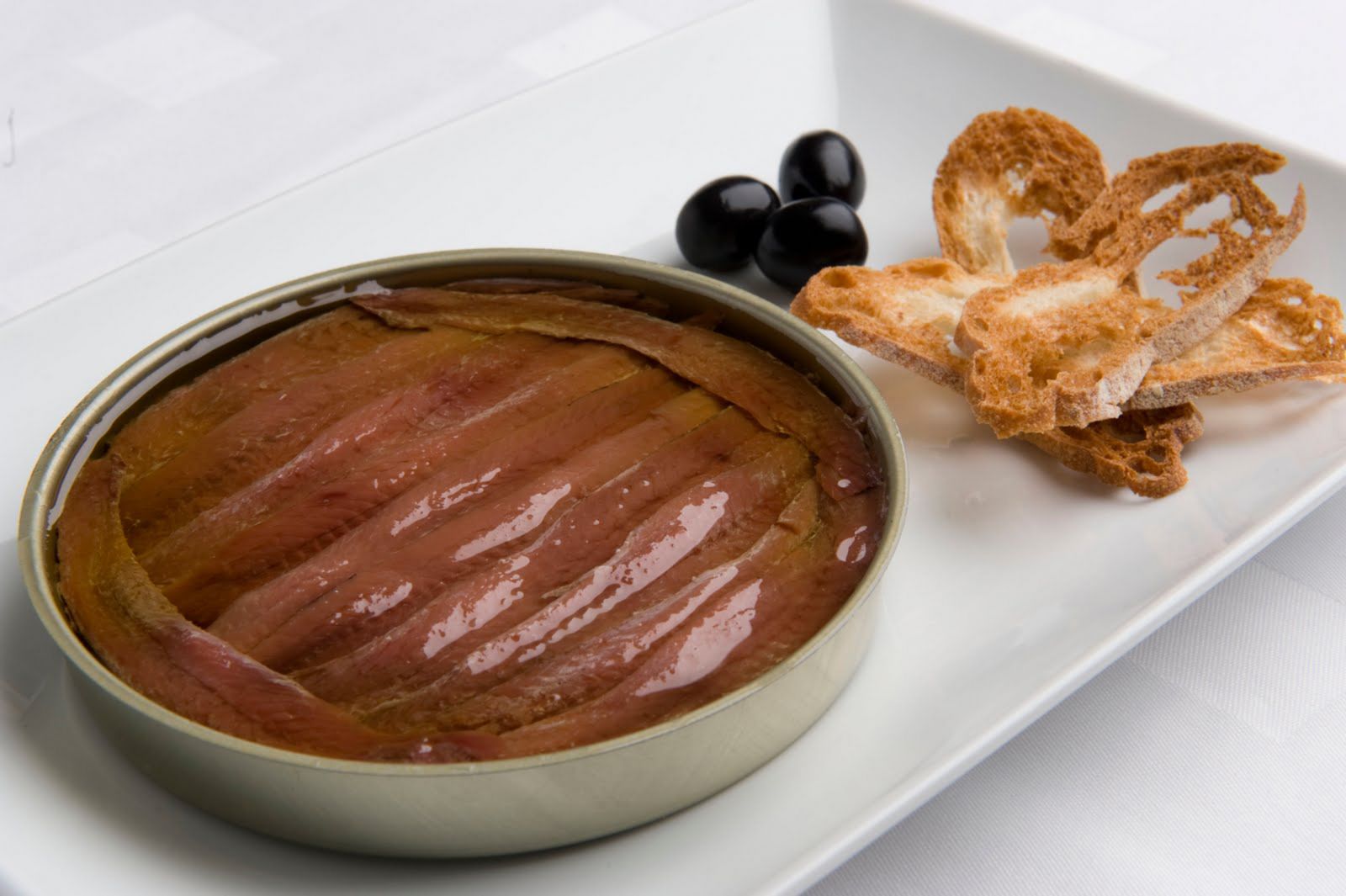 Cantabrian anchovies in olive oil
Cantabrian anchovies in olive oil
This semi-preserved salt-cured fish with an intense flavour that is rich in omega-3, was brought to Spain by the Italian craftsmen who found the best specimens of bocartes (anchovies) in the Cantabrian Sea.
The term bocarte is another name given to this species due to the large mouth it uses to feed on marine plankton (boca=mouth in Spanish). The ideal time of year to catch anchovies for preserves is during the spring months.
Despite the fact that the Basque fleet – mainly from Bermeo and Ondarroa – catches the most anchovies, Cantabria is the region that leads in the production of anchovy preserves. Santoña is, in fact, the town with the greatest tradition of this activity and is where the industry is most highly concentrated. However, both Asturias and Galicia produce high-quality anchovy preserves in addition to the Basque Country.
But the origin of anchovy preserves is with the Italian craftspeople who came to Spain at the end of the 19th century in search of the fish that had become scarce in their waters, and because the best quality ones could be found in the Cantabrian Sea.
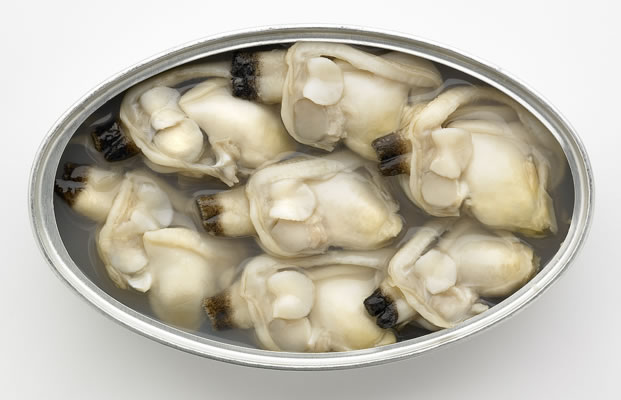 Clams
Clams
Clam preserves reign over all the others. This mollusc satisfies even the most refined palates due to its delicate and succulent taste. It offers the most aromatic sea flavour that you can find. The best clams are caught in the Rías Gallegas (Galician Sea inlets).
Noia and Arousa are significant clam-catching sites, although high-quality clam specimens are also caught in the towns of Ribeira and Aguiño. Clam season starts in October and the gatherers collect the best specimens for use in preserves during this month.
This delicacy provides many benefits since it is very low in calories but rich in high-quality protein. It is one of the foods with the highest iron, iodine, phosphorus, and calcium levels.
The historical evolution of clam products is similar to that of the cockle, although it has always been superior and is the most choice preserve.
Coastal anchovies

Anchovies are small oily fish with silver bellies that live in saltwater. Preserved anchovies are received fresh from the port and are then are cut, eviscerated, and cleaned by hand in brine. Next they are steamed in a cooking tunnel. The result is a product with a smooth texture and intense aroma. It is canned in olive oil.
Cockles
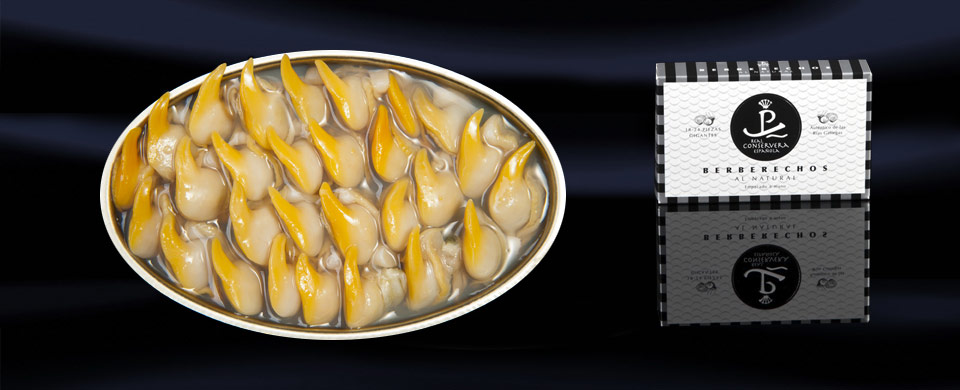
The best cockles and mussels are those caught in the Rías Baixas area where the season starts in October. Shellfish have always represented one of the major dietary staples of the Galician coasts. In the 1940s, the packaging of this preserve began, along with mussel industrial processing, reaching its peak with the economic boom of the 1960s.
Cockles are rich in iron, practically fat-free, very low in calories and offer a high-quality protein content. Packed one-by-one using the traditional method, they have an intense sea flavour.
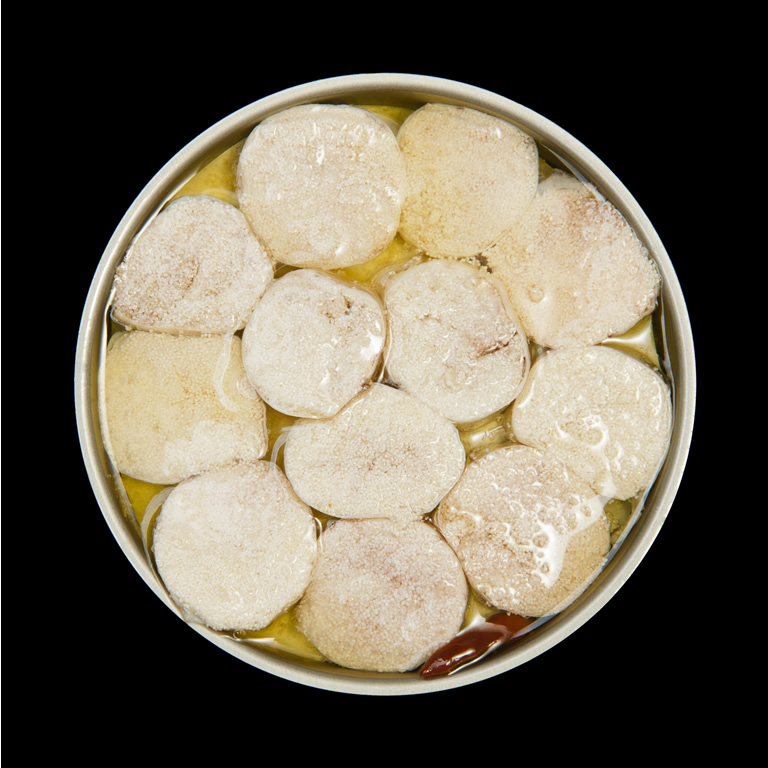 Hake roe in olive oil
Hake roe in olive oil
The world of canned seafood has been getting more sophisticated. Today we can talk about preserves that go beyond the usual mussels and tuna. That’s where hake roe comes in. It is obtained from the animal during spawning season and is a delicate and highly valued food with a smooth texture. The roe is sorted, washed, and boiled, sliced or with the outer sac removed, and preserved in olive oil.
Just open and serve! Even though it doesn’t need any condiments you can find hake roe on the market seasoned with lemon, hot pepper, or cayenne pepper.
Mussels in marinade
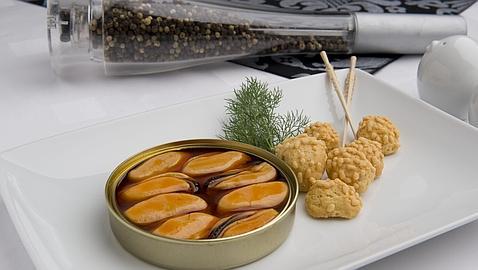
The use of mussel-harvesting ponts in the Ría de Arousa Inlet from the 1940s onward gave rise to one of the most typical preserves in Spain. Marinating shellfish is the most traditional conservation method, as this technique was used in the past for its preservation. The best product is normally harvested from September to November, coinciding with highest production levels. The “Mexillón de Galicia” or Galician Mussel has its own Protected Designation of Origin, due to its excellent quality.
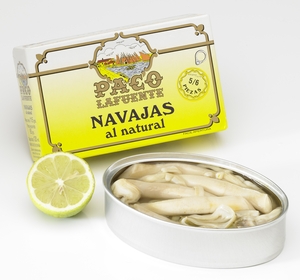 Razor clams
Razor clams
Razor clams get their name from the shape of their shell, which is like a blade. They are one of the Galician Sea’s jewels, owed to their succulent and prized flesh. Although they can be found in other Spanish seas, razor clams are mostly found in Galicia. They inhabit sandy coastal areas and spend most of the time burrowing in a vertical position. Their burrows can reach a depth of up to 50 centimetres. On the sand they leave a distinctive shape of the number 8.
They are dug year round with the diving method, although experienced and daring shellfish gatherers have a trick that is both surprising and foolproof: they place a handful of salt next to the hole where the burrowed razor clams live.
The colour of this shellfish ranges from white to light brown with brown or red strips. The shells, when stretched open display very fine vertical and horizontal fissures.
If eaten fresh they can be served grilled with a little olive oil or simply a bit of lemon. However, as a preserve, they are an excellent choice, ideal at any time of day.
Sardines in olive oil
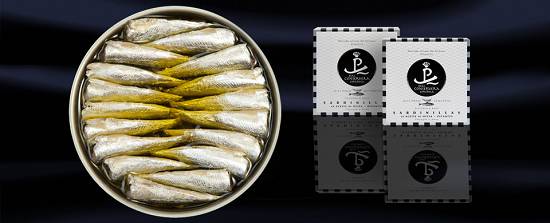
The sardine is the most veteran of all the preserves and the most traditional one in Spanish pantries. It was the first fish that was put through the preservation process at the beginning of the 19th century. Although the technique for making preserves comes from England, it was Frenchman Nicolas Appert who made the system available to all households in 1810. It is of French origin, specifically Nantes, which is why this fish preserve was referred to as “Nantes-style sardines” for such a long time.
The area for catching sardines spans the entire coast of Spain but the Galician coast is particularly abundant in this type of fish. In fact, by the beginning of the 20th century, the predominant sardine fishing area was the Galician Sea inlets.
It is a noble seafood, humble yet flavourful. Truly a great food. To determine the quality of this product, the fat content of each sardine must be considered. The more polyunsaturated fats, the better the flavour is. Peak sardine catching season is from summer onwards, but especially between the months of September and November; an optimum time for fishing.
This fish is very nutritionally complete and healthy. Its high protein, omega 3, calcium and phosphorus content has made sardine preserves in olive oil a staple in Spanish pantries.
Squid

This cephalopod mollusk (the smallest of which is called chipirón in Spain) is one of the most popular sea preserves. n the canned goods market, it is usually found cooked in its own ink, stuffed or cut, or accompanied by the unmistakable spicy sauce américaine. For a complete and delicious meal, all you have to do is open the can and enjoy the contents with rice. In addition, squid is often prepared with garlic or accompanied by the fantastic simplicity of olive oil.
Tuna Mojama
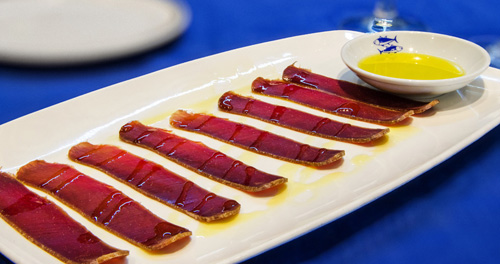
Mojama tuna is the star of salt-curing and is considered a delicacy in Andalusian cuisine.This fish preserve is prepared with large pieces of red tuna as a raw ingredient. This type of tuna is traditionally caught using the age-old art of fishing of the almadrabas, a practice that has been preserved throughout centuries in the area surrounding the Gibraltar countryside and is still used today.
The fish is dried in special drying tunnels for at least 18 days. The result is a unique product reminiscent of salt-cured ham due to its texture and appearance, but that retains that unmistakeable sea flavour in its layers. The way it is sliced is of key importance in the tuna mojama product, just as with salt-cured ham, and it is done with extreme care in the Andalusian preserves industry.
Urchin caviar
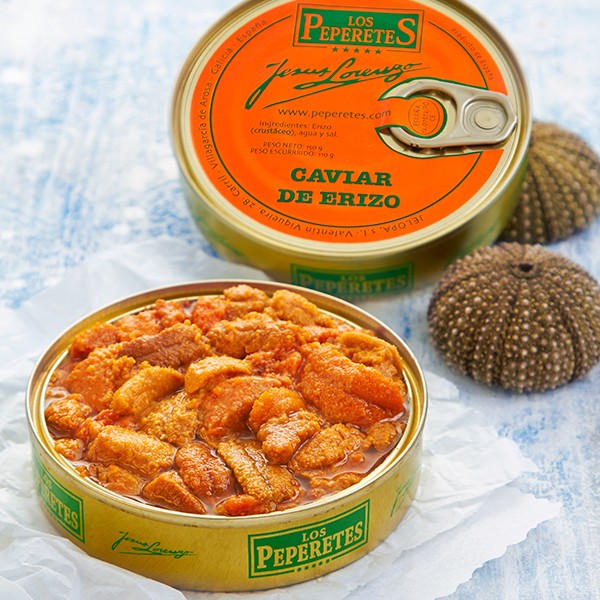
Urchin roe is a highly valued food. They are extracted from the animal, washed, and sorted, then canned as is.
They have an intense sea flavor and an attractive bright reddish color. There’s nothing like urchin if you are looking for the greatest concentration and expression of the sea in a food.
Thanks to its production in preserves, you can enjoy this delicacy during the off season, any time of year, and anywhere.